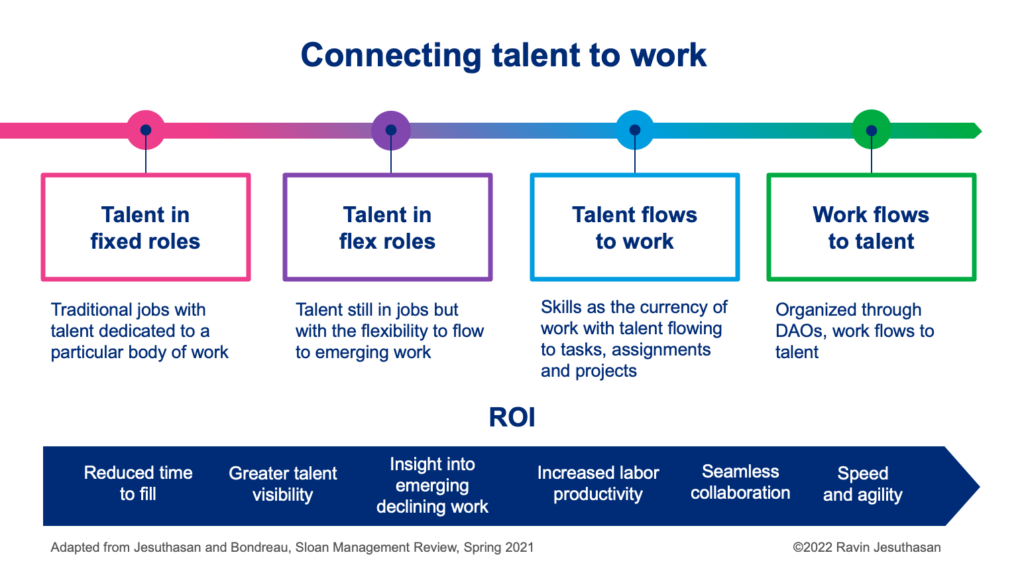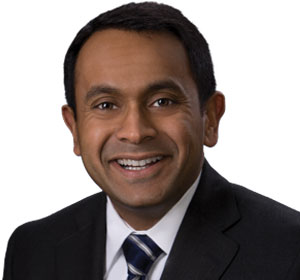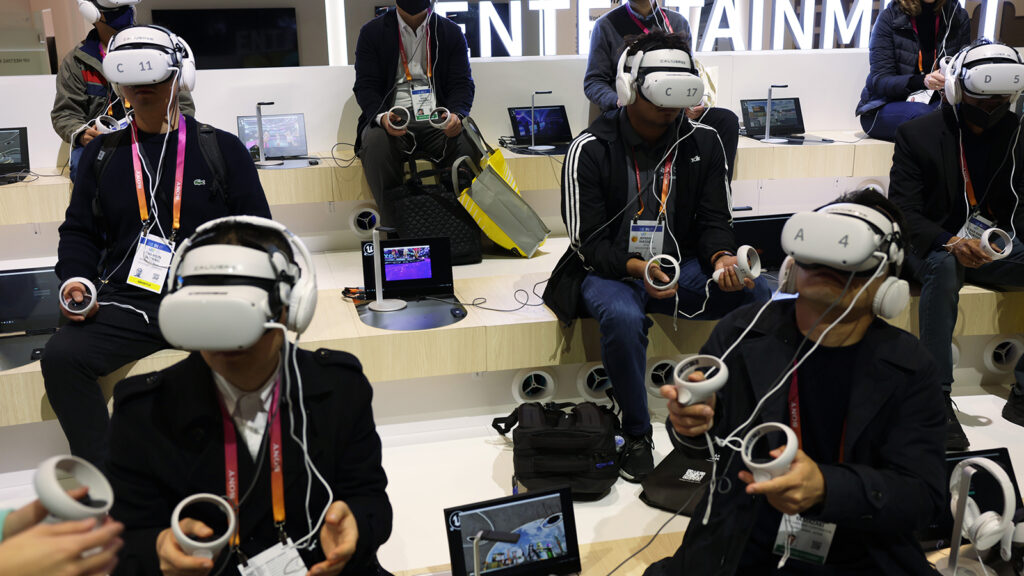How Will Web3 Impact the Future of Work?

The combination of the metaverse and a decentralized Web3 has the potential to radically transform operating models and the labor market.
Photo: Getty Images
The global pandemic accelerated the digital transformation of work and the work experience. Stranded at home, millions of workers across the globe replaced daily commutes, office desks and watercooler chats with Zoom calls. Cue the next evolution in the virtualization of work, the metaverse; essentially an application of spatial computing that will see us using our avatars to work, meet, learn, socialize, play, trade and transact in fully immersive virtual environments. Media hype notwithstanding, the metaverse is already here.
At the same time, another technological revolution is brewing, the so-called decentralized web, or “Web3”. Non-fungible tokens (NFTs) and cryptocurrencies are perhaps the best-known applications of this new iteration of the web, while decentralized autonomous organizations (DAOs) running on public blockchains are already ushering in a revolutionary way to reimagine how human communities, businesses, and labor, get organized.
Decentralized Autonomous Organizations in Web3
DAOs exploit smart contract architectures and digital tokens verified on public blockchains, such as Ethereum, in order to give members of a DAO the possibility to directly participate in its governance. Decision making thus becomes collective and based on how many votes — expressed in the number of tokens — a certain proposal in the DAO gets. There are no barriers to entry, and owning tokens in a decentralized autonomous organization is permissionless. Since all rules are coded in smart contracts and all transactions are recorded on a blockchain, a DAO is fully transparent to its members. If the DAO is purposed with developing ideas, or software, then the IP is open-sourced, at least for now.
The combination of the metaverse and a decentralized Web3 has the potential to radically transform operating models and the labor market. As Zarkadakis explains in Cyber Republic, as decentralized autonomous organizations are adopted more widely, new types of businesses will emerge that would look more like cooperatives and less than corporations, significantly reducing agency costs. In such decentralized organizations, leadership will rely on soft power and empathy, using culture and shared values to align the interests of disparate stakeholders to a common mission and purpose.
In a DAO there are no officers, or directors, or managers, and therefore leadership roles are more fluid and impermanent, giving more opportunities to members to rise up. DAOs may decide to prioritize social goods — such as job security — above operational efficiency. This shift from hierarchical structures to flat, widely distributed networks and ecosystems run by stakeholder communities instead of boards and executives, will have a profound impact on work too.
The visual below illustrates the fundamental differences between traditional organizations and decentralized autonomous organizations.

Work Without Jobs
One of the most significant implications of metaverse for the future of work relates to how work will be organized and talent connected to work. In Work Without Jobs, Jesuthasan and Boudreau describe three ways in which talent is connected to work (fixed, flex and flow) within the context of a new work operating model for companies organized within the context of a corporate structure. With the introduction of decentralized autonomous organizations, we see a fourth option with even less friction and much greater agility, one where work flows to talent. The following visual illustrates these four options and the potential gains as we move from left to right.

Within the context of work being increasingly organized as decentralized autonomous organizations, the traditional hierarchical mix of roles within a corporate structure (leader, manager, employee, contractor and vendor) and functions will morph significantly into a flatter construct comprising:
- A core group of individuals responsible for coordination of work and delivering on the value proposition of the DAO.
- A broader contributor group that provides specific services to execute the mission of the DAO. This includes other DAOs that provide services like HR, finance and accounting and customer service on an ongoing basis and individual contributors (gig workers or contractors) that take on projects as needed.
- An even broader group of “members” who will promote brands, support continued crowdsourcing of ongoing product innovation or otherwise contribute to the advancement of the DAO’s mission.
Each of these groups will be compensated quite differently. The core group will share in the total value created by the decentralized autonomous organization less payments to the other two groups. The payments to the contributor group will vary between fixed payments for ongoing services in the case of a DAO providing HR services and more episodic payments to individual contributors as they take on and execute specific projects. Members will be rewarded as they make various contributions to the DAO with the potential for payment in NFTs with virtual-to-physical redemptions.
How Can Businesses Adapt to Web3?
There are still many challenges for the adoption of a decentralized web and the metaverse. In most places around the world DAOs do not currently have a legal status, which poses serious issues, especially when a decentralized autonomous organization extends its activities beyond the digital space. Regulators are still struggling to keep up with the high rate of innovation that comes from Web3 pioneers. Nevertheless, there are already clear opportunities for businesses to start thinking and piloting use cases for a decentralized metaverse future. Here are a few ways to prototype your initial steps into this new world of work:
- Broaden the participation in your business model. DAOs present us with an opportunity to increase the agility of the enterprise by enabling work to flow to talent beyond the traditional “walls” of the organization. Consider creating a DAO that enables the broader community of stakeholders in your business to participate in promoting your brands or crowdsourcing ideas for innovation.
- Experiment with taking the idea of a decentralized autonomous organization further, by outsourcing ESG goals to a DAO governed by your company’s stakeholders, such as employees, contractors, suppliers, and impacted communities.
- Identify opportunities and use cases in your core processes where the gradual transition to metaverse will add value, and include them in your digital transformation agenda.
The metaverse and Web3 will transform work and business models as we know them. Will you be ready?
A version of this article originally appeared in the World Economic Forum.






